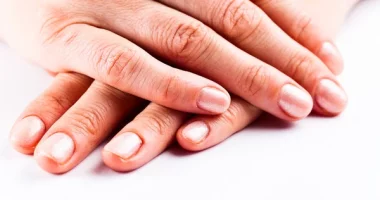Yeast infection, also known as candidiasis, are fungal infections that can affect various parts of the body, with vaginal yeast infections being a common type. They are caused by the overgrowth of the fungus Candida, primarily Candida albicans. Most yeast infections are effectively treated with antifungal medications or herbs such as;
1. Oregon grape
Oregon grape, a plant containing berberine, have antifungal properties that can help combat Candida overgrowth. Berberine, found in Oregon grape, has been shown to inhibit the growth of various Candida species, including Candida albicans, and is known for its potency against a wide range of bacteria and fungi. However, it’s important to use Oregon grape with caution and under the guidance of a healthcare professional. Pregnant or breastfeeding women are advised against taking Oregon grape due to its berberine content, which may cause uterine contractions and lead to complications with pregnancy. Individuals with chronic health conditions should also seek advice from a health professional before using Oregon grape. Oregon grape is available in supplementary forms such as tinctures, teas, and extracts, and it can be used as an antifungal agent alongside other treatments for Candida overgrowth, such as caprylic acid, coconut oil, and oregano oil.
2. Cinnamon
Cinnamon has been found to possess antifungal properties that may help in fighting yeast infections, particularly those caused by Candida. Research studies and articles have highlighted the following points:
- Cinnamon contains natural antimicrobial, antifungal, antibiotic, and antiviral properties, making it effective against various microorganisms, including Candida.
- Cinnamon has been shown to be effective in treating and preventing the spread of Candida in the digestive tract. Studies reported that cinnamon oil was able to break down the biofilm of Candida albicans in the gut, leading to a reduction in the yeast and restoration of normal health.
- Research has compared the effectiveness of cinnamon oil against Candida with other essential oils and found that cinnamon oil was the most active in killing off the Candida yeast and preventing its spread.
- Cinnamon has been described as a powerful and effective home remedy for controlling Candida yeast infections. It has been suggested that cinnamon is more effective than other treatment options and can be easily incorporated into the diet
- A double-blind randomized clinical trial found that oral cinnamon capsules were more effective than clotrimazole vaginal cream in the treatment and recurrence of candidal vaginitis. The study concluded that cinnamon capsules were effective in improving recurring candidal vaginitis.
- Cinnamaldehyde, a compound found in cinnamon, has been shown to have an effect on fungal growth in Candida albicans and Candida glabrata, with a fatal effect on the fungi.
- Cinnamon oil has demonstrated antifungal activity against Candida species isolated from blood stream infections, indicating its potential in combating Candida-related blood stream infections.
In conclusion, the evidence suggests that cinnamon, particularly its oil and extract, possesses antifungal properties that can be effective in fighting yeast infections, including those caused by Candida.
3. Ginger
Ginger has been found to contain antifungal compounds such as gingerol and shagelol, making it effective in inhibiting the growth of Candida albicans. Several research studies have demonstrated the potential benefits of ginger as an antifungal, and it has been shown to be effective in inhibiting the growth of Candida albicans in laboratory settings. Additionally, ginger has been used in traditional medicine to help with a variety of ailments and is considered safe when consumed in reasonable quantities. However, further research is needed before ginger is developed into a pharmaceutical medication. Ginger can be consumed in its natural form to utilize its antifungal properties. It is important to note that ginger should be consumed in reasonable quantities, and individuals with certain health conditions should consult a healthcare professional before using ginger as an antifungal. Therefore, based on the available information, ginger shows potential as a natural antifungal agent, particularly against Candida albicans.
4. Garlic
Garlic is believed to have positive effects on the immune and cardiovascular systems and is known to slow the growth of the Candida fungus that causes yeast infections. While some women have reported positive results from using garlic for yeast infections, studies on its effectiveness have been inconclusive. Allicin, a compound found in garlic, exhibits antibacterial and antifungal properties and is used in some over-the-counter products. Garlic can be administered orally or topically, but it’s important to be cautious as some women have experienced less than desirable side effects. While garlic may aid in preventing yeast infections or improving current conditions, it’s essential to consult with a doctor before using it. Studies on the effectiveness of garlic for yeast infections have not been large or high-quality, and more research is needed to determine its true efficacy. Therefore, while garlic may have some potential benefits, it’s important to use it with caution and under the guidance of a healthcare professional.
5. Turmeric
Turmeric, a spice commonly used in cooking, contains curcumin, a powerful anti-inflammatory and antifungal agent that appears to inhibit the growth of Candida albicans and protect against yeast infections. Recent research studies have revealed that medicinal turmeric may possibly help cure Candida infection and various other types of fungal infections. Curcumin, the natural polyphenol found in medicinal turmeric, has powerful antioxidant, anti-inflammatory, antifungal, antibacterial, and antiviral properties. Studies have shown that curcumin found in medicinal turmeric possessed antifungal activity against 14 different strains of Candida. Curcumin hinders the ability of yeasts to attach to mouth cells and is actually more effective than many antifungal drugs. Turmeric can be consumed in its natural form or as a supplement to utilize its antifungal properties.
6. Neem
Neem has been shown to be effective against Candida infections due to their antifungal effects. It has been used to treat oral, genital, and systemic candidiasis. Neem oil and extract have been found to boost the body’s immune system, be effective in eradicating oral and gut candida infections. Additionally, neem extract vaginal suppositories is discovered to be an effective treatment for candida infection of the vagina in women.
Note: Neem leaf capsules is effective to treat chronic candidiasis, and neem oil is effective for skin candida infections.
7. Tea tree oil
Tea tree oil has been shown to have antifungal properties and may be effective in treating yeast infections, particularly those caused by Candida. It has been used as a topical antiseptic to effectively treat superficial mycoses caused by fluconazole-resistant Candida species and other azole-resistant yeast. Some women have reported relief from adding diluted tea tree oil to a tampon and inserting this into the vagina overnight. However, it’s important to use tea tree oil with caution. Essential oils such as tea tree oil should not be applied internally or directly to the skin, as this can cause irritation, burning, and other health issues. Tea tree oil should never be swallowed or taken orally, as oral ingestion of tea tree oil is toxic. Therefore, while tea tree oil may have some potential benefits, it’s important to use it with caution and under the guidance of a healthcare professional. Always do a patch test before trying a new essential oil, and seek medical help if your symptoms don’t improve within a week or become more severe.
What are the types of yeast infections that exist?
Yeast infections can occur in various parts of the body, including the vagina, skin, mouth, throat, and bloodstream. The most common type of yeast infection is vaginal candidiasis, which affects up to 75% of people with vaginas at some point in their lives. Other types of candidiasis include cutaneous candidiasis on the skin, oral candidiasis or thrush in the mouth, throat, tongue, or esophagus, invasive or systemic candidiasis in the bloodstream and throughout the body, and nail candidiasis at the bottom or edges of fingernails or toenails.
What causes yeast infections?
Yeast infections are caused by the overgrowth of the fungus Candida, primarily Candida albicans. While yeast is a fungus that is normally found on the skin and in the digestive system, an overgrowth can occur due to various factors. These include changes in the physical environment, such as sitting for too long in a wet bathing suit, hormonal changes, pregnancy, uncontrolled diabetes, a weakened immune system, and the use of antibiotics, cortisone, and other drugs. Potential irritants, such as douching washes, spermicide, soaps, powders, or deodorants, tight-fitting clothing and synthetic materials, such as bathing suits and sportswear, can also contribute to the development of yeast infections. Sexual contact can sometimes lead to yeast infections, as the body chemistry can have a bad reaction to another person’s natural genital yeast and bacteria, which causes yeast to grow.
Symptoms/signs of yeast infections
The symptoms of yeast infections can vary depending on the affected area. Here are some common symptoms of yeast infections by type:
- Vaginal yeast infection: itching and irritation in the vagina and vulva, burning sensation, especially during intercourse or while urinating, redness and swelling of the vulva, vaginal pain and soreness, vaginal rash, white, odor-free vaginal discharge with a cottage cheese appearance, watery vaginal discharge.
- Cutaneous candidiasis: red, itchy rash with scaling and/or pustules, especially in skin folds, such as the armpits, under the breasts, or around the groin or diaper area.
- Oral candidiasis or thrush: white patches on the tongue and inside the mouth, soreness or inflammation of the mouth and throat, cracking at the corners of the mouth, pain when swallowing.
- Invasive or systemic candidiasis: fever and chills, low blood pressure, rapid heart rate, skin rash, confusion, and other signs of organ failure.
- Nail candidiasis: nail discoloration, thickening, and separation from the nail bed.
- candidemia ( bloodstream candida): belly pain, chills or fever, low blood pressure, muscle aches, skin rash, weakness or fatigue, esophageal candidiasis can cause dysphagia, candidemia usually causes fever, but symptoms are nonspecific. Some patients develop a syndrome resembling bacterial sepsis, with a fulminating course that may include shock, oliguria, and acute respiratory distress syndrome (ARDS). Invasive candidiasis can affect internal organs, including the eyes, heart, brain, and kidneys, and can cause life-threatening complications.
It’s important to note that these symptoms can be similar to other conditions, and an accurate diagnosis requires a healthcare provider’s evaluation. If you suspect you have a yeast infection, it’s essential to consult a healthcare provider for an accurate diagnosis and appropriate treatment.
Disclaimer:
The information provided about yeast infections and potential treatments, including neem, is for informational purposes only and should not be construed as medical advice. Always consult with a qualified healthcare provider for any health concerns or before starting any new treatments. They can assess your individual needs and provide safe and effective options based on your medical history and specific condition.
ALSO READ: 7 herbs that can fight cold and flu easily








